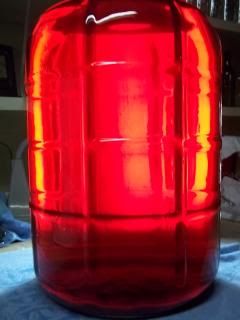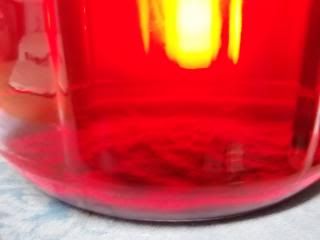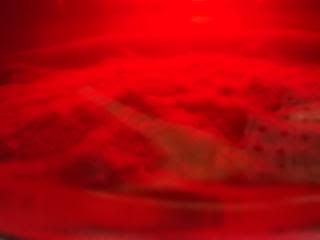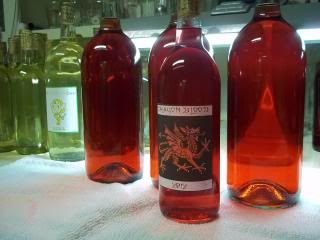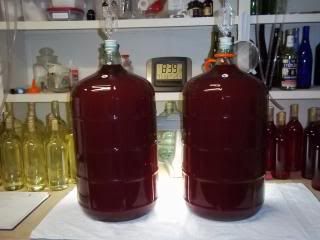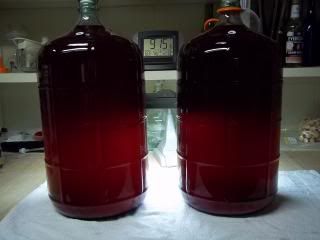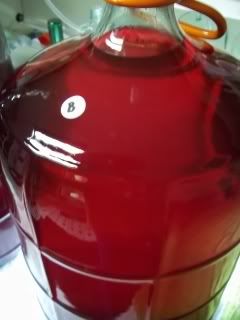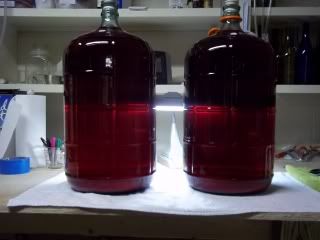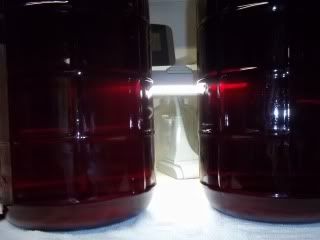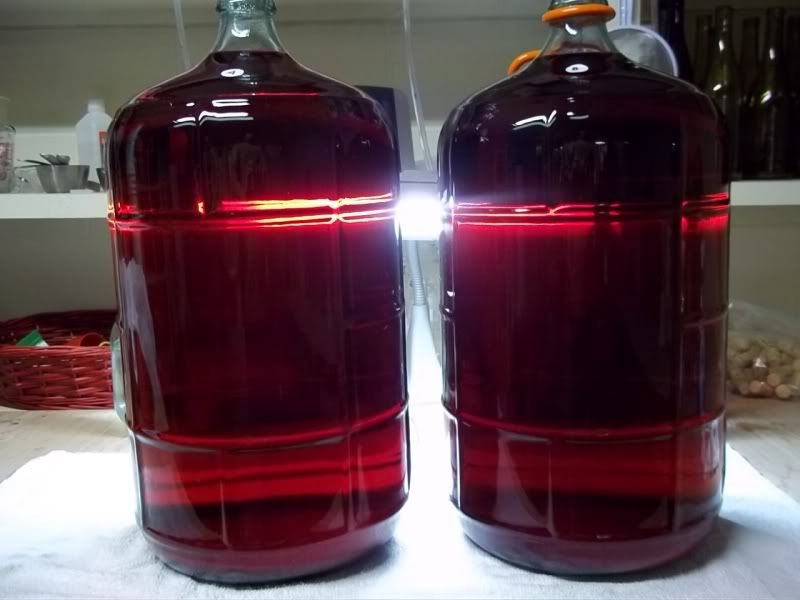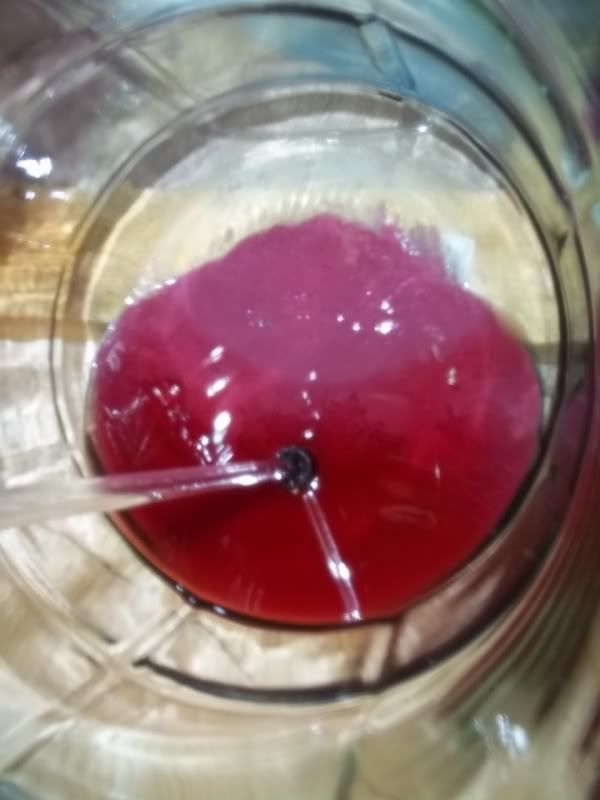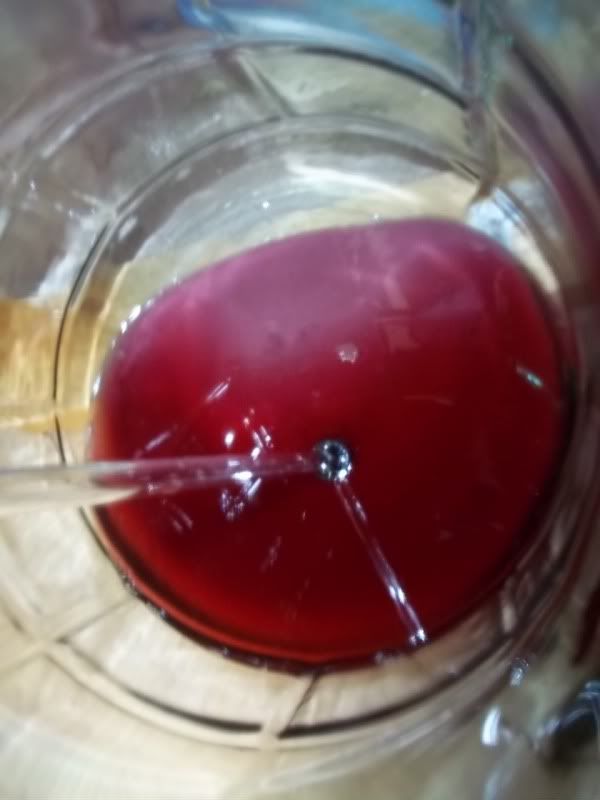The weekend never came! A powerful derecho took out power all over southern Ohio, and left us without electrcity for three days. Luckily, we have a finished basement/wine cellar that stays cool (67F) 24/7.
Check General Chit-Chat for my tale of the
DERECHO?
It turned out to be a good thing, I think, that the Dragon Bloods got to sit and settle out nicely, since one of my goals was to examine and compare the consistancy of the sediments. My hope was that the bentonite would help to "lock" the fluffy sparkolloid in a more solid state, making racking without disturbing the sediments easier and to reduce loss of wine.
July 3th, DAY 29:
Let's look at the cleared Dragon Blood. No difference at all with clarity. They both look great! The sediments look equal.
Following this picture, the batches were both racked and backsweetened (with my usual four cups of sugar). I observed the sediments during vacuum racking to see how easily they could be disturbed. Here are some pics of the sediments.
Batch
A
Batch
B
Although they don't show much, what you might notice is that Batch
B (sparkolloid only) has more wine left in the carboy. The sediments in Batch
A (bentonite + sparkolloid) were definately more solid, and clung to the bottom much more readily than the Batch
B. I got more clear wine off of Batch
A---nearly an entire 750ml bottle! The sediments in Batch
B were easily disturbed, and even being very careful I managed to suck up a little of them during this racking.
I'm going to let them sit one more week to see if anything else falls out, then I'll taste and bottle. At that time, I will give my final conclusion on this study of bentonite and Sparkolloid.






